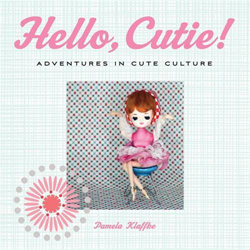For almost 80 years, Kirkus Reviews has served as the industry bible for bookstore buyers, librarians, and ordinary readers alike. Now Popdose joins the Kirkus Book Bloggers Network to explore the best — and sometimes the worst — in pop-culture and celebrity books.
This week! Get out your cameras and have your barf bags ready, because things are about to get seriously cute…

Everybody loves cute. We’re biologically programmed for it by long millennia of evolutionary psychology, and it’s a good thing, too. The signifiers of cute, you see — soft, rounded features, head oversized relative to the body, eyes oversized relative to the head — are characteristic of infants; and man, we let babies get away with murder. Dig it: If an adult stranger threw up on you, or spattered your home with filth, you’d probably give him a punch in the mouth for his trouble. But a baby can drench your favorite shirt with barf, and it elicits a chuckle; a puppy can soil your Turkish rug, and draw a fond smile. They’re only little critters, after all. And they’re so adorable.
Journalist and photographer Pamela Klaffke, in her new book Hello, Cutie! Adventures in Cute Culture, talks plenty about what cute is and why we react to it as we do. She never comes right out and says that our instinctual response to Teh Cute is a survival adaptation, hardwired into the human race to keep us from punching babies right in the gaddam face, for the good of the species — but then, she doesn’t really need to; it’s there between the lines.
Hello, Cutie! is an oddly-structured book. There are brief profiles of leading collectors and popularizers of The Cute, such as documentarian Faythe Levine (2008’s Handmade Nation) and cartoonist Meghan Murphy, creator of the webcomic Kawaii Not. But at its heart, the book is essentially a long essay about the origins and manifestations of Klaffke’s own interest in all things big-eyed and cuddly, accompanied by her own photographs of items from her collection.
The visuals are striking; Klaffke backdrops her objets de kitsch against vintage fabrics, the gleefully tacky patterns — in hues not found in nature — clashing magnificently with the cheerful shades of the toys and tchotchkes themselves, then shoots analog, purposely using expired film. It’s a unified aesthetic, tying together her more-is-more philosophy and love of nostalgic technologies in the very act of making the image. The resulting photographs vibrate with warm, supersaturated colors and visible film grain, fairly leaping off the page and hump your eyeballs like an overeager puppy.
As for the the text: It is determinedly breezy, and also slightly rambling, veering across the territories of personal essay, popular history, and a few half-hearted stabs at cultural criticism. Klaffke identifies Japan as the center of the ”cute economy,” for instance, and that’s quite true; the market for kawaii fashions and accessories is massive there, and many Japanese trends have crossed over into the Western world. But though Klaffke lists many examples of the kawaii aesthetic, she never really explores the cultural context that spawned it — the convergence of national trauma, technological future shock, and the intersection of industrialization (and the attendant, unprecedented prosperity) with a traditionally-stratified social structure — and that has powered the Japanese culture industry’s drift to the extreme edges, with the aggressively innocuous likes of Hello Kitty at one pole and new expressions of body horror and sadism at the other….
Read the rest of this article at Kirkus Reviews!





Comments